AWS Certified SysOps Administrator - Associate
Domain 6 Cost and Performance Optimization
Importance of Cost optimization
Welcome to this lesson on cost optimization—a fundamental pillar of the AWS Well-Architected Framework. This topic is especially relevant for SysOps, Solutions Architects, and other IT professionals looking to balance technical performance, security, reliability, and budget constraints.
Cost optimization is about finding the right equilibrium between enhancing system features such as speed, reliability, and security, while keeping financial resources in check. In a perfect world, unlimited resources would allow optimization in every aspect, but the reality of finite budgets makes cost management essential.
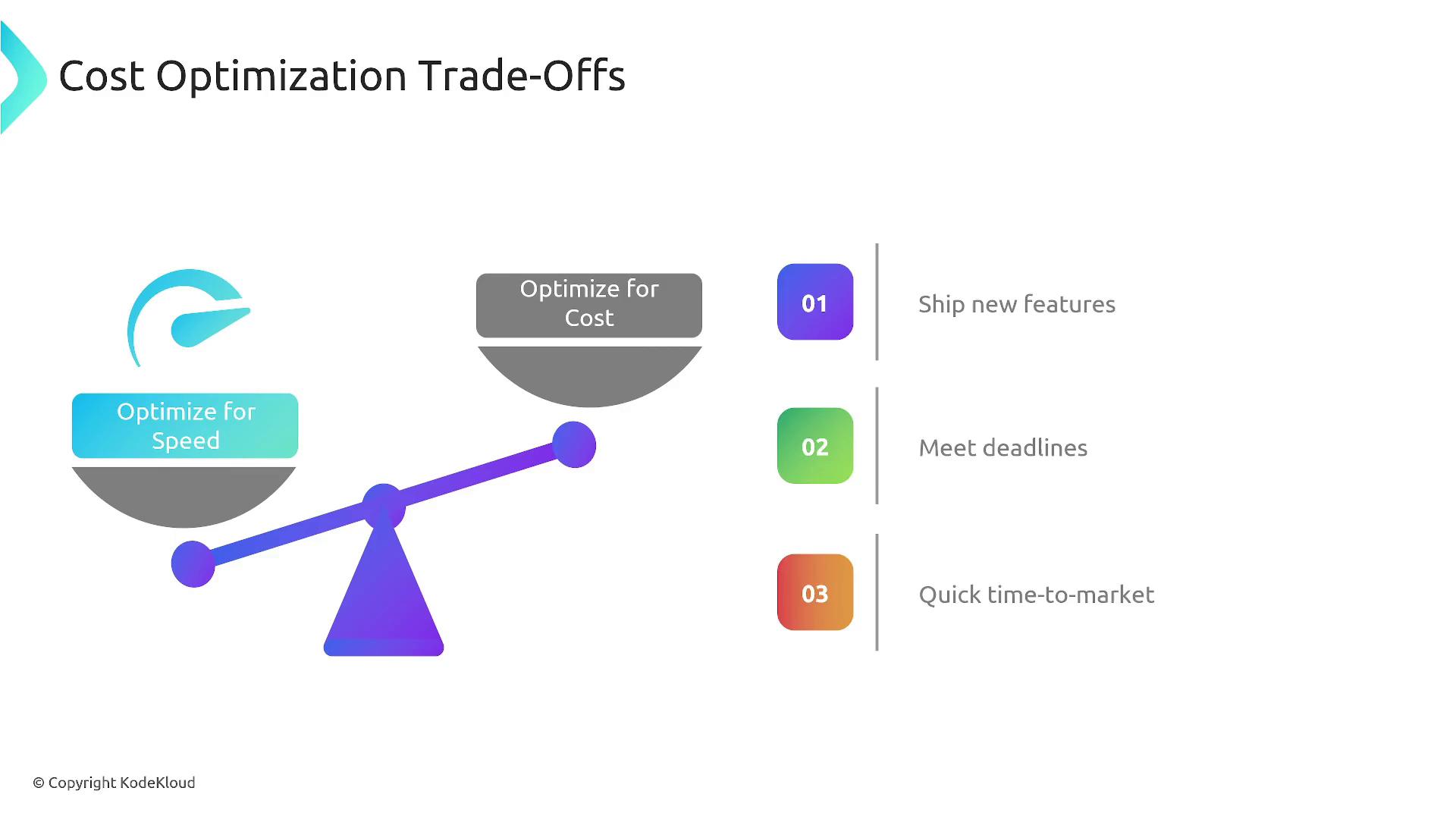
When releasing new features quickly or meeting tight deadlines, financial constraints may limit improvement efforts. This ongoing tension between cost and performance requires a systematic and well-structured approach.
Cost is not an isolated concept—it is deeply influenced by other pillars of the AWS Well-Architected Framework. Whether addressing security, reliability, performance efficiency, operational excellence, or sustainability, every decision has a cost component that must be managed to maximize overall value.
Key Design Principles for Cost Optimization
- Always monitor your cloud expenses to ensure you are utilizing resources effectively.
- Leverage consumption-based pricing models offered by AWS, which allow scaling resources up or down according to fluctuating demand.
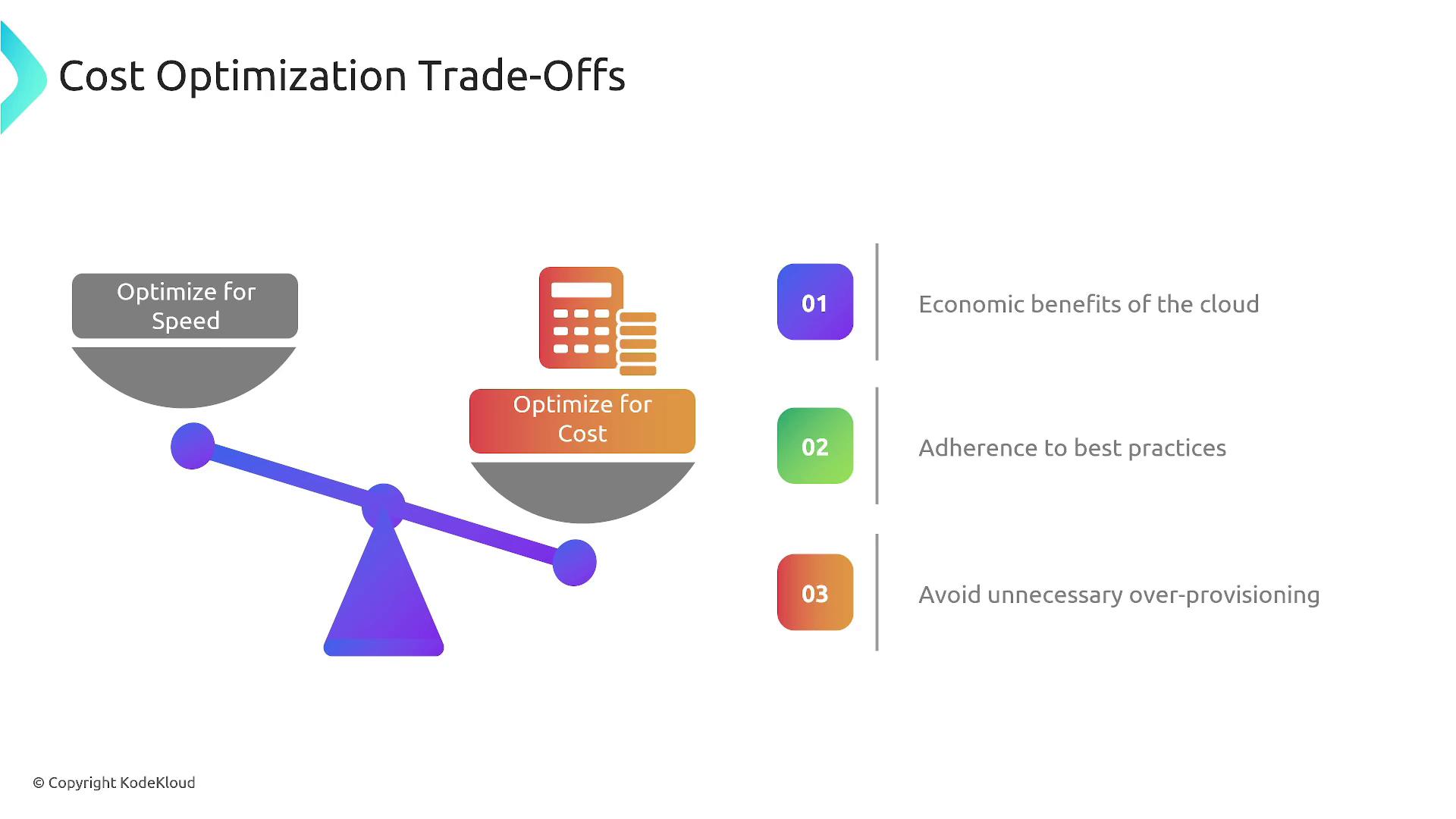
Using wisely sized resources is essential for operational efficiency. By scheduling virtual machines to run only during peak hours or necessary time frames, businesses can significantly reduce costs without compromising on service quality.
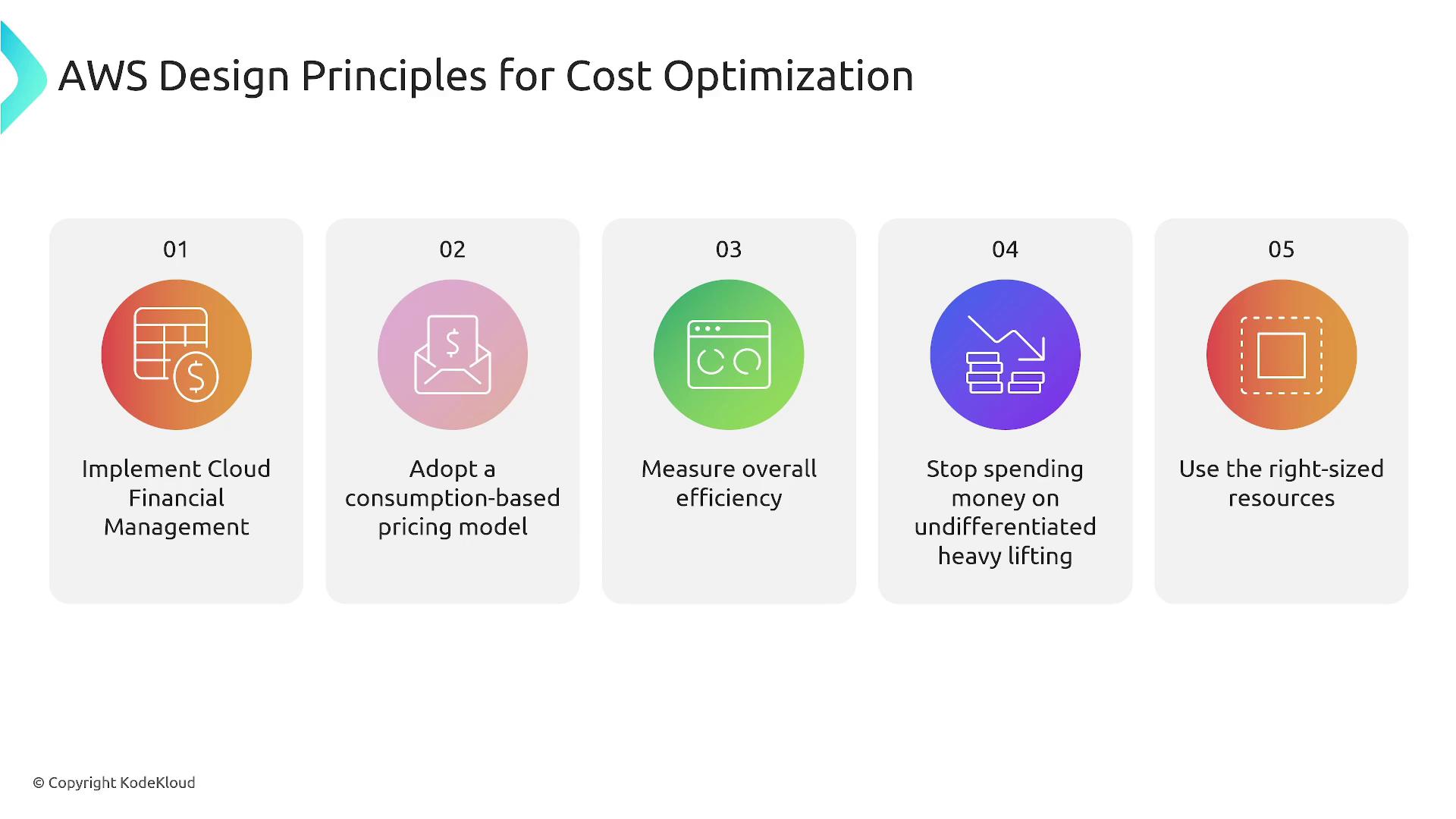
AWS Cost Management Tools
AWS offers a suite of tools to effectively manage and optimize costs. Familiarizing yourself with these can be beneficial for both certifications and practical implementation:
- AWS Budgets: Enables you to configure alerts and automate actions when spending crosses pre-defined thresholds.
- AWS Cost Explorer: Provides detailed analysis of your historical spending and usage while offering forecasts for future expenditures.
- Amazon CloudWatch: Monitors your resource usage, including instances with burstable CPU performance, and triggers alerts based on cost-related metrics.
- AWS Trusted Advisor: Delivers recommendations to improve security, performance, and cost efficiency. (Note: Full access to Trusted Advisor is available only with Business, Enterprise, or Enterprise On-Ramp support plans.)
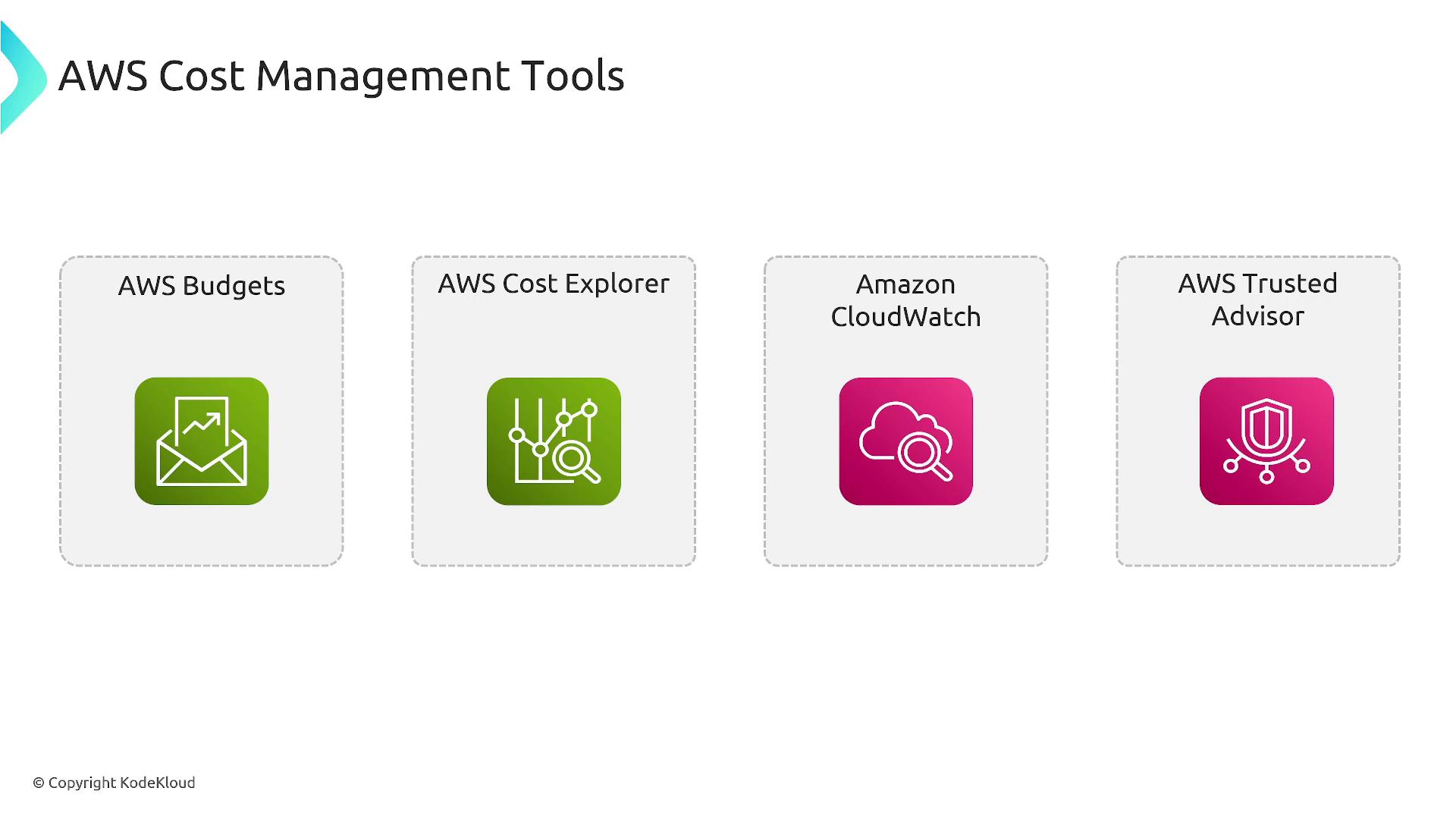
Focus Areas for Cloud Cost Optimization
To optimize cloud costs effectively, focus on several key areas:
- Cloud Financial Management: Develop a strong financial governance model to oversee and control expenses.
- Expenditure and Usage Awareness: Gain visibility into resource usage and identify non-essential or redundant services.
- Cost-Effective Resource Utilization: Match resources with current demand—such as scheduling power cycles during off-peak hours—to avoid paying for idle capacity.
- Managing Demand and Supply: Scale resources in line with workload patterns, expanding during high-demand periods and contracting when usage decreases.

Implementing Cloud Financial Management
A critical component of cost optimization is proper resource tagging. Assigning clear ownership through tagging links each resource to financial attributions, projects, billing codes, and organizational units. Enforcing tagging policies bridges the gap between finance and technology teams by establishing clear accountability.
In addition, developing precise budgets and forecasting dashboards is crucial. Automating reporting, notifications, and budget enforcement ensures proactive decision-making before costs spiral out of control.
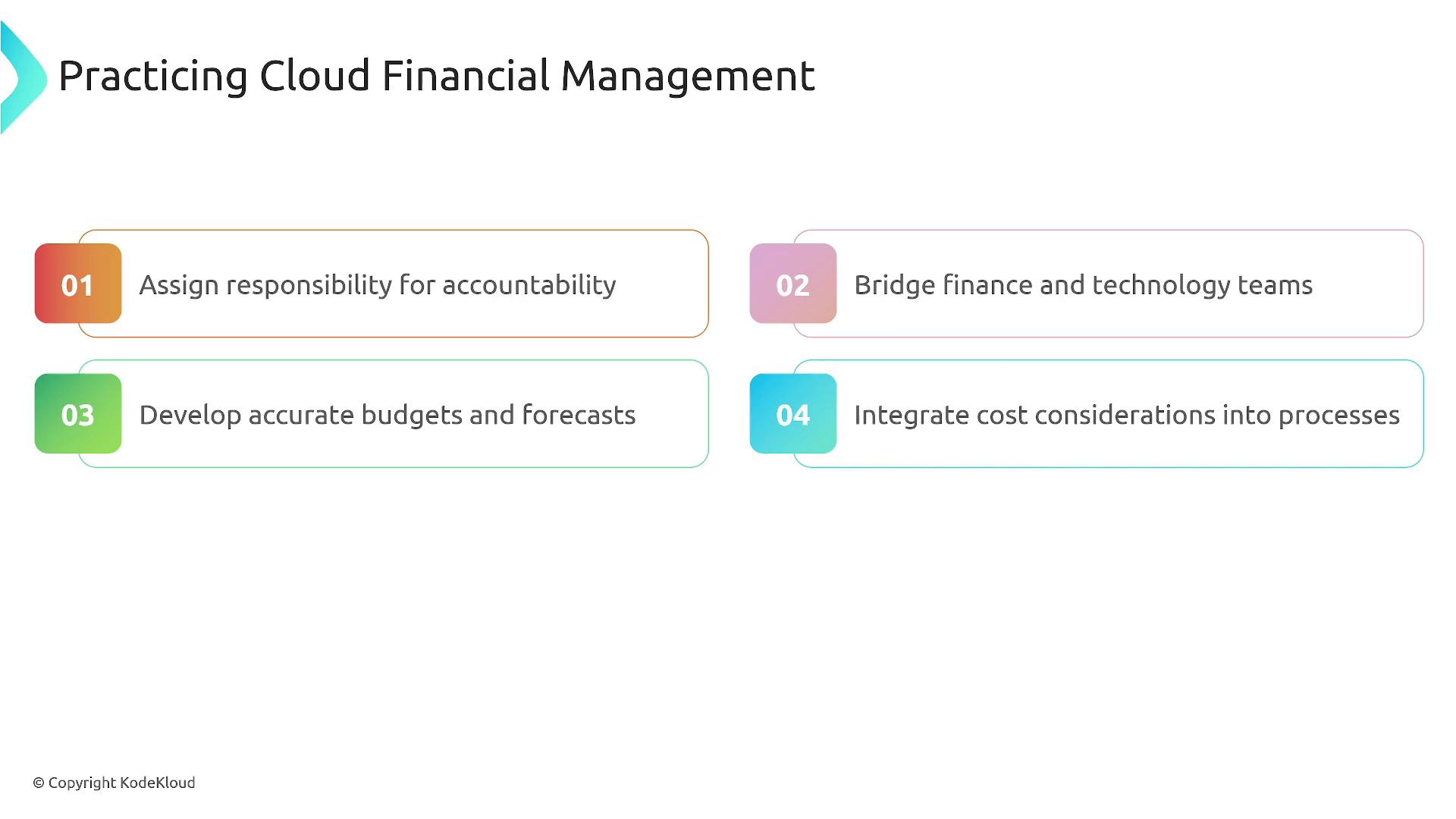
If you encounter scenarios where data remains idle—such as storage that hasn't been accessed in several months—it is advisable to migrate such data to more cost-effective storage solutions (e.g., colder storage tiers).
For achieving cost-effective resource usage, evaluate each component individually. This involves selecting the right pricing models, choosing appropriate AWS regions, and keeping data transfer costs in check. Certain AWS regions, such as California or Frankfurt, might incur higher costs compared to other regions.
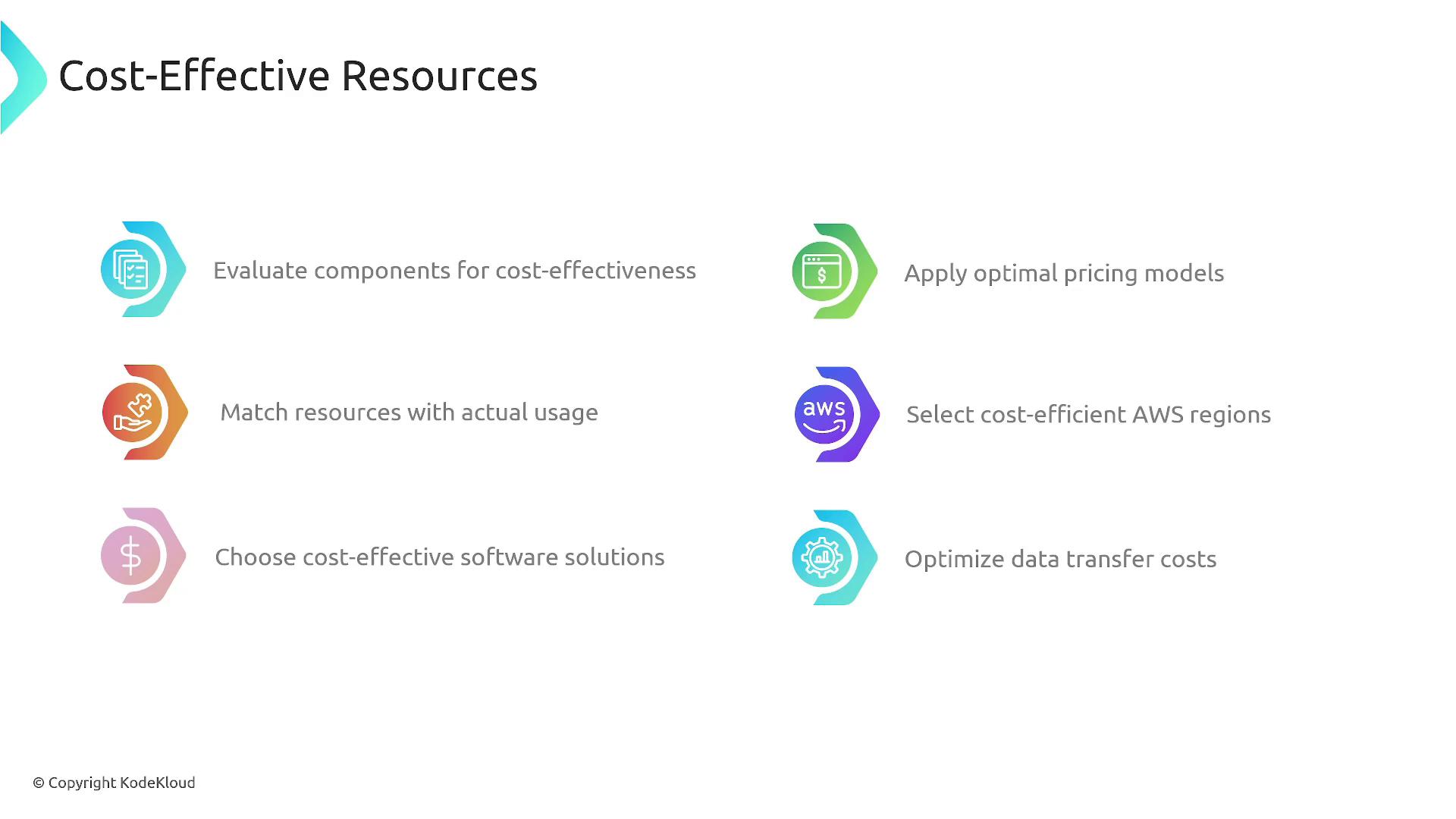
Managing Demand and Supply
Understanding and analyzing workload patterns is key to aligning resource supply with demand. Whether through auto scaling or on-demand adjustments, it is essential to continuously monitor workloads and automate responses to changes. Regular evaluations, along with staying informed about new AWS service releases, will drive ongoing efficiency improvements.
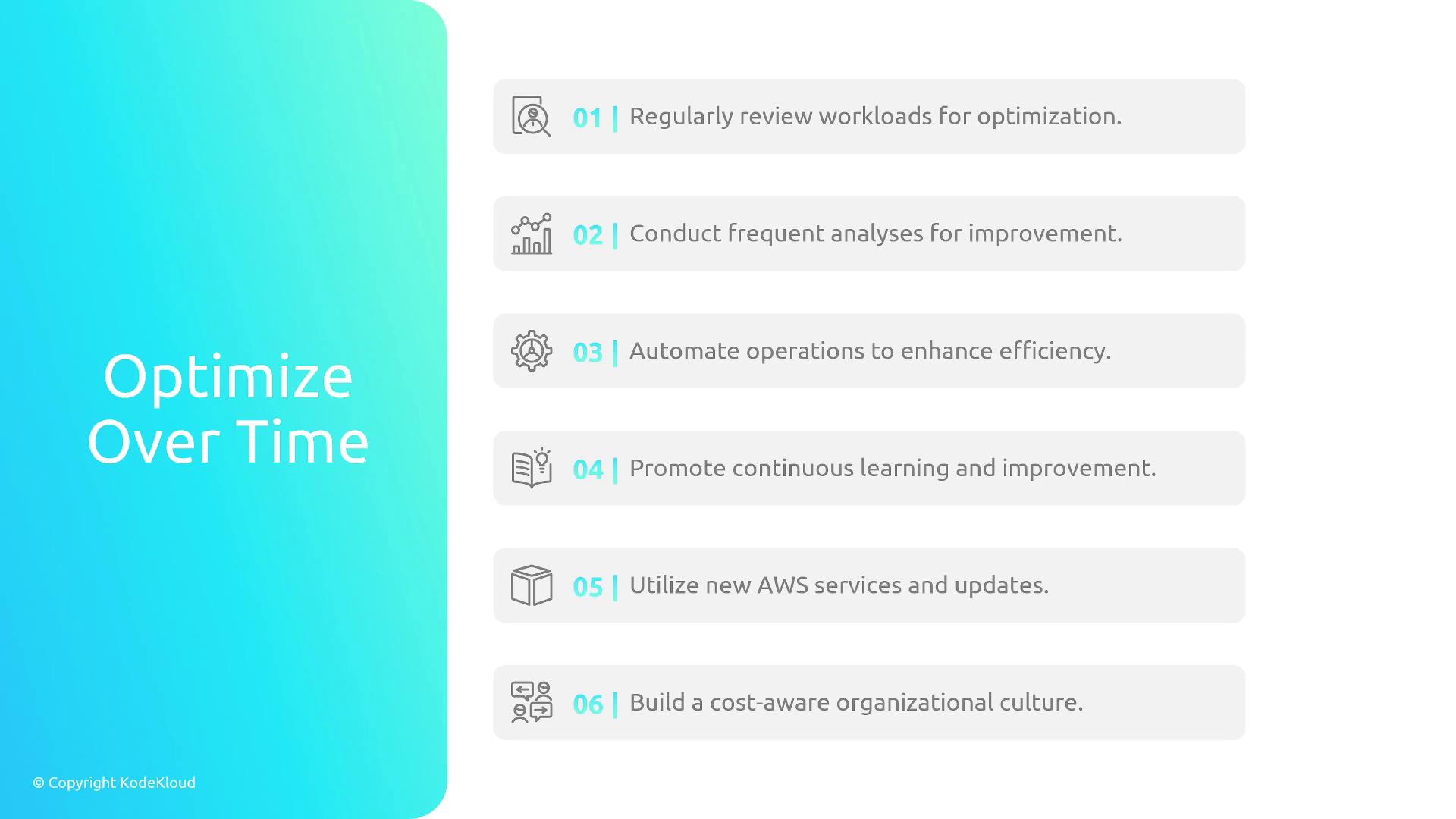
In summary, developing a cost-aware culture means assigning clear ownership for resources, maintaining rigorous financial oversight, and continuously optimizing workloads. Upcoming sections will provide a deeper dive into specific tools and further strategies to help you master cost efficiency on AWS.
Thank you for exploring the importance of cost optimization.
Watch Video
Watch video content